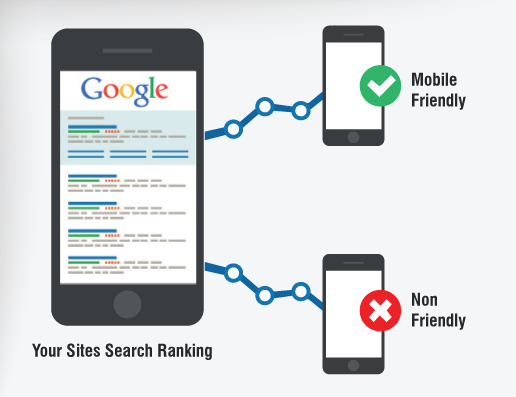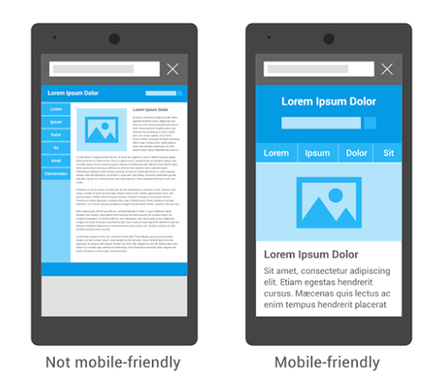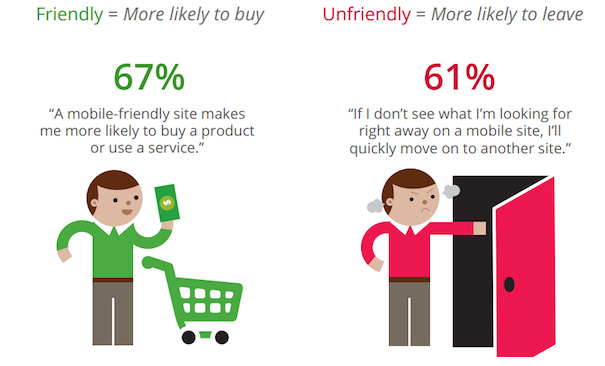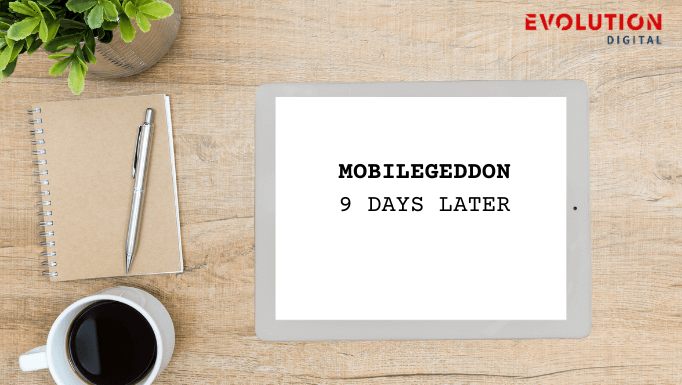It seems every digital marketing blog on the planet, including Search Engine Land, Moz, and Search Metrics, was covering articles about Mobilegeddon last week. We were told to be scared, and to quickly optimise for the new mobile algorithm.

Is your website mobile friendly?
Well, what actually happened following the Google update? Was there a reason to be worried?
Mobilegeddon was set to be a drastic update where non-mobile-friendly websites were to be heavily impacted for their SERP rankings on Google. Early in March, Google made this announcement:
“Starting April 21, we will be expanding our use of mobile-friendliness as a ranking signal. This change will affect mobile searches in all languages worldwide and will have a significant impact in our search results.”
What is Mobilegeddon?
A lot of speculation was made after this announcement. A few of the top Webmasters concluded that, to avoid being penalised, we should:
- Make sure each individual page of the website is optimised for mobile (DUH!)
- The website doesn’t necessarily have to be responsive, but it will be better in the long term (you could have a dedicated mobile website but with the array of different mobile screen resolutions and sizes, you would be better off with a responsive design that can adapt to all devices)
- Make sure that Googlebots can crawl the CSS and Javascript files
- Avoid having the website rely on Flash.
- Make sure all your external links also lead to mobile-friendly websites
You can check if your website is mobile-friendly here: https://www.google.com/webmasters/tools/mobile-friendly/
This is the difference in design for a non-mobile-friendly website and a mobile one:

See the difference?
For years Google has been pushing brands to optimise for mobile, and this was a way of pushing further: Google is basically saying LISTEN TO US OR WE WILL PUNISH YOU.

Mobilegeddon Results
Google recently published:
“We’ve seen a 4.7% uptick in the proportion of sites that are mobile friendly, and we hope to see even more in the coming months.”
According to Search Engine Land, Webmasters are left unimpressed with the algorithm update since they have not noticed a huge change in rankings for a large list of websites. However they take larger companies’ websites into account.
When the Irish economy is mostly based on SME’s, it is more interesting to look at how Mobilegeddon has affected them rather than larger corporations.
Over half of all Irish SMEs that have websites use designs unsuited to mobile devices, according to IEDR figures.
SMEs depend heavily on keyword rankings for their SERPs and traffic, whereas website traffic for larger businesses like AIB for example rely on their brand name.
In their press release, Google mentioned something interesting:
“Note that this is just one of over 200 signals we use to evaluate the best results. Non-mobile-friendly sites won’t disappear from mobile Search results—they may still rank high if they hold great content the user wants. […]
While the mobile-friendly change is important, we still use a variety of signals to rank search results. The intent of the search query is still a very strong signal — so even if a page with high quality content is not mobile-friendly, it could still rank high if it has great content for the query.”
Have you seen a drop in conversions or website traffic lately? Do you think your ranking have been affected by the algorithm?
In any case, whether or not you have been impacted by Mobilegeddon because of your non-mobile-friendly website, consider these results from a survey conducted by Google:

How do your visitors react?
We hope this helped!
Stay tuned to get the latest on Digital Marketing trends & feel free to get in touch if you need help with your business!





